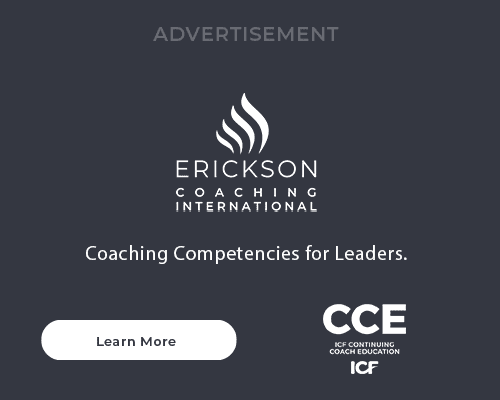How to Help Businesses Become Exponential Organizations
Gone are the days of a do-it-yourself mentality in the business world. Now, the world’s most successful companies rely on a network of partners and technological advances to lower their costs while driving growth. These are known as exponential organizations.
Your client could do well with such a structure—whether they know it or not—and it’s a coach’s job to point them in the right direction. Here are four steps to helping a business transform into an exponential organization.
1. Bring the Concept to the Client
As a coach, it’s your job to listen to what your client wants to achieve to help that dream become a reality. However, many business leaders have missed the memo when it comes to exponential growth—they certainly enjoy seeing these types of returns in their personal investment portfolios but have yet to apply a compound return model to their businesses.
With the client’s permission, you might point to other successful companies to get the ball rolling—in less than six years, for example, Uber’s valuation has skyrocketed to $68 billion. That’s because Uber doesn’t follow the traditional linear business model. Instead, they incorporate both their internal staff and external networks—mostly in the realm of technology—to help their business grow quickly and profitably.
2. Look at the Business Structure
Again, exponential organizations need to reject the traditionally linear structure; instead, they should focus on technologies and international markets, which will require a change in their overall setup. With the client’s permission, you can provide examples of success or suggestions on how to make those structural changes.
You could use online retail giant Zappos as an example. They decided to function as a holacracy, which means they did away with a top-down management structure, allowing teams to organize and lead themselves.
Zappos took on this restructure because they said growth led them to stagnation. However, when a city doubles in size, it leads to a 15 percent boost in productivity per resident. The company wanted to foster a similar increase, so they restructured their company to make it feel more like a city than a traditional, linear business. This type of case study could help the client see how to best re structure to achieve their goals.
3. Guide Clients Toward an Action Plan
As a coach, you can’t tell clients what to do. Even exponential organizations expert and speaker Salim Ismail doesn’t say definitively what a business should do to achieve the envisioned level of success. Instead, he shares an action plan that companies can tailor to their own goals. The plan uses five internal and five external strategies to spur growth, based on today’s fastest growing technologies.
Ismail’s list, includes 10 areas in which changes could lead to a tenfold increase in performance, and companies choose only four to implement. They might lease their assets instead of buying them, use algorithms to streamline the business process, give employees more autonomy or experiment with new methods and adapt the best ones to their business structure.
Even with these results-oriented ideas, there’s no rigidity in choosing the one(s) that would most improve a particular organization. As a coach, you should give your client the chance to define what they want to achieve and potentially give them options of how to proceed and do better. Ultimately, though, they need to be in charge of choosing which steps would be the most beneficial—they should find their own solutions.
4. Keep Them Accountable
Keeping your client accountable is perhaps the most important responsibility you have as a coach so that they can indeed achieve, in this case, the goal of transforming a linear organization into an exponential one.
As a coach, you have a set of tactics to stoke this accountability already. For starters, you should make sure every goal and expectation is defined as clearly as possible. Work with the client to come up with a straightforward list of goals; the more they can come up with on their own, the better. Figure out what types of resources, skills, training and relationships would be required to achieve these benchmarks, and make sure there’s a plan to acquire those assets, too.
Along the way, you’ll have to keep them in line with their timelines and targets, so make sure you know how you’ll measure success. Use your coaching skills to ensure the client is moving forward. And, if the client is failing to hold up their end of the bargain, be firm and honest about how that’s affecting their goals and how it’s delaying their success. That might be enough to get them back on track.
Achieve Exponential Success
With your support, clients can realize they need a structural change and figure out how they’ll implement one. From there, it’s up to you to champion their success from start to finish—and both of you will feel accomplished as you coach them across that finish line.




What an excellent way to help clients consider another perspective – perhaps asking the question “What do you think your company would look like if it was structured differently.”
Thanks for the insight!